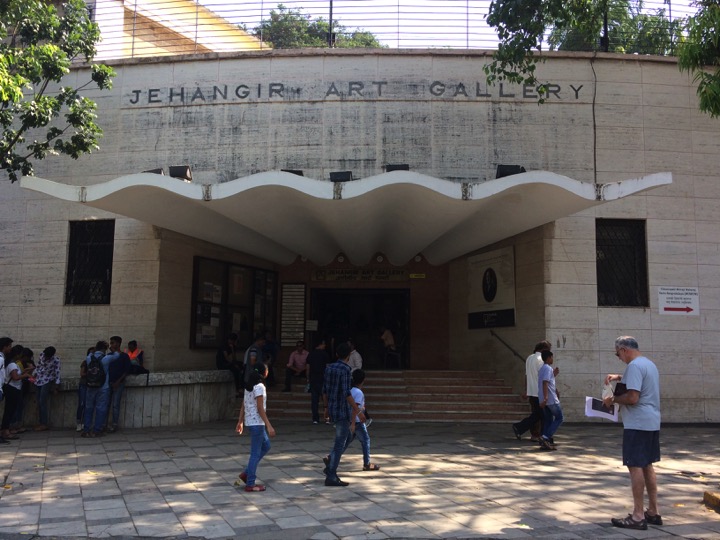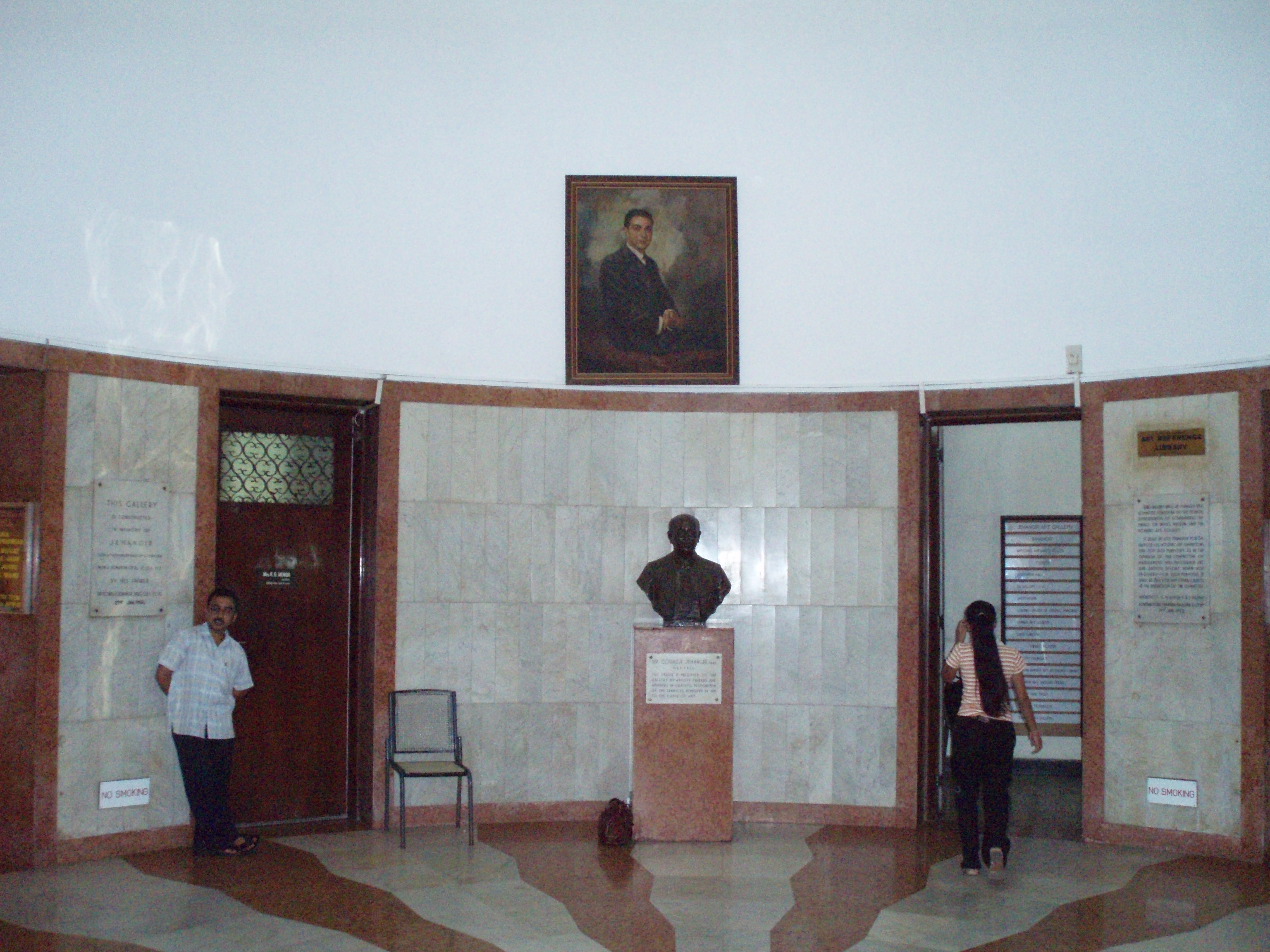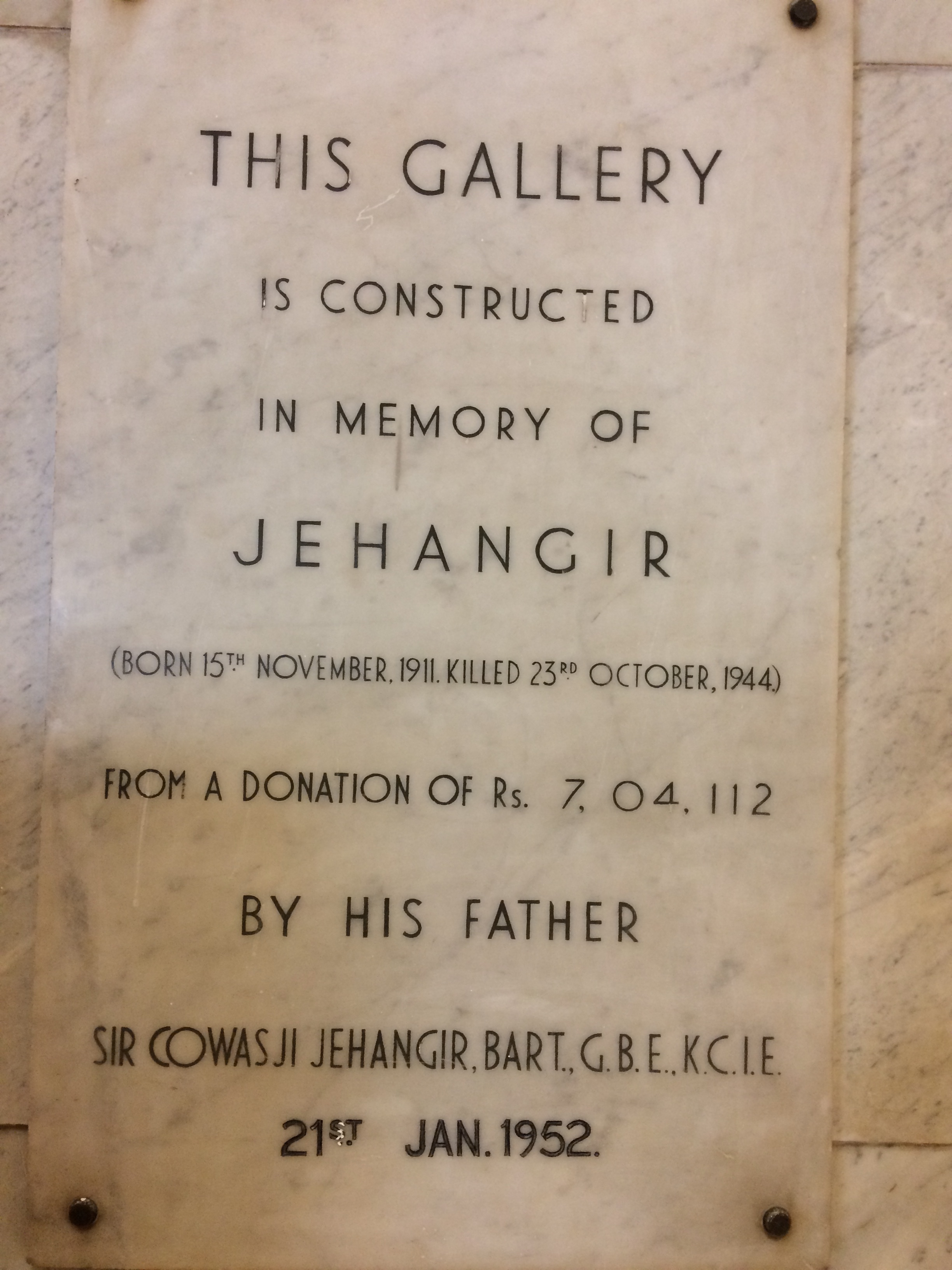Archive
https://archive.metromod.net/viewer.p/69/2951/object/5145-11941876
Archive
Jehangir Art Gallery
- Jehangir Art Gallery
- Art GalleryAuditorium HallLibrary
Efforts to create spaces for the democratic presentation, discussion and reflection of art in Bombay after independence led to the establishment of the Jehangir Art Gallery in 1952.
Word Count: 27
61 B, Mahatma Gandhi Road, Kala Ghoda, Fort, Bombay (now Mumbai).

Jehangir Art Gallery, 2018 (Photo: Margit Franz; All Rights Reserved). 
Jehangir Art Gallery, entrance hall, 2007 (Photo: Margit Franz; All Rights Reserved). 
Jehangir Art Gallery, entrance hall: Bust of the donor and founder Sir Cowasji Jehangir between his two sons. On the left Jehangir Cowasji Jehangir, who gave the gallery its name; on the right Sir Hirji Jehangir, former chairman of the Jehangir Art Gallery Trust, 2018 (Photo: Margit Franz, 2018). 
Portrait of Jehangir Cowasji Jehangir by Walter Langhammer (Photo: Margit Franz, 2007). 
Commemorative plaque (Photo: Margit Franz, 2018). 
Art education for the masses: Walter Langhammer presents a USIS (United States Information Service) film at Jehangir Art Gallery, Auditorium Hall, 1952 (© Digital Photo Archive Margit Franz, authorized by the late Kekoo Gandhy; © Gandhy Archive, Mumbai; All Rights Reserved). Chatterji, R. “A Bumper Harvest of Beauty: Art & Artists: 1949 Retrospect.” The Times of India, 1 January 1950, p. 12.
Franz, Margit. “From Dinner Parties to Galleries: The Langhammer-Leyden-Schlesinger Circle in Bombay – 1940s through the 1950s.” Arrival Cities. Migrating Artists and New Metropolitan Topographies in the 20th Century, edited by Burcu Dogramaci et al., Leuven University Press, 2020, pp. 73–90. Project Muse, doi: 10.1353/book.77990. Accessed 30 March 2021.
Mehrotra, Rahul, and Sharada Dwivedi. The Jehangir Art Gallery. Established 21st January, 1952. Jehangir Art Gallery, 2002.
Word Count: 76
Private Archive Margit Franz, Sinabelkirchen.
Private Archive of late Khorshed & Kekoo Gandhy, Mumbai.Word Count: 14
- 21-01-1952
Dr. Homi Bhabha, K.H. Hebbar, Kekoo Gandhy, Sir Cowasji Jehangir, Sir Hirji Jehangir, Walter Langhammer, Rudolf von Leyden, Albrecht von Leyden
- Bombay
- Margit Franz. "Jehangir Art Gallery." METROMOD Archive, 2021, https://archive.metromod.net/viewer.p/69/2951/object/5145-11941876, last modified: 14-09-2021.
-
Kekoo Minochair GandhyFrame Shop OwnerGalleristArt CollectorBombay
Starting from a cosmopolitan milieu for young local artists, Kekoo and his wife Khorshed Gandhy developed a business model that turned the frame shop into Gallery Chemould.
Word Count: 27
Rudolf von LeydenGeologistAdvertisement SpecialistJournalistArt CriticArt CollectorCartoonistBombayThe advertisement expert, Rudolf von Leyden, became a major art critic and art historian in Bombay in the 1940s, advocating an urgent need for modernism in art in post-colonial India.
Word Count: 30
Picture of Rudi von Leyden’ s Bust by Sadanand K. BakrePhotographBombayThe picture of the previously lost and recently located sculpture by Sadanand K. Bakre reflects the relationship between the artist Bakre and the art critic Rudi von Leyden.
Word Count: 28
The Leydens: Sculpture, Paintings, CartoonsExhibitionBombayIn 1948 Albrecht and Rudi von Leyden sold their personal works of art in order to set up an “Artists' Aid Fund”, which became an institution in the following years.
Word Count: 29
One Man exhibition and subsequent trial, Akbar PadamseeCourt CaseBombayAkbar Padamsee’s solo exhibition in Bombay in 1954 was overshadowed by his arrest on charge of displaying obscene pictures. The subsequent court case drew support from across the art world.
Word Count: 30
ChemouldGalleryFrame ShopBombayChemould’s history stretches from its beginnings as a manufacturer of chemical mouldings and frames in 1941 over to a hub for art circulation displaying a variety of artists in Bombay.
Word Count: 30
Bombay Art SocietyAssociationBombayOne of the oldest art societies in India founded by colonial rulers, Bombay Art Society showcased art students and professional artists from all over India, including the Progressive Artists of Bombay.
Word Count: 31
Open Studio Evenings by Käthe and Walter LanghammerSalonBombayThe painter Walter Langhammer and his wife Käthe built an informal infrastructure to promote local avant-garde artists and regularly invited them to Open Studio Evenings at their studio.
Word Count: 29